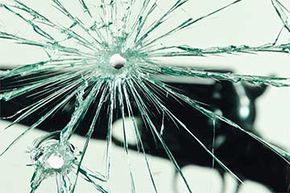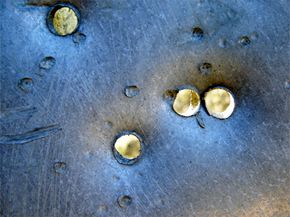Key Takeaways
- Shooting a gun on an airplane could lead to loss of cabin pressurization and require passengers to use oxygen masks, due to the thin air at high altitudes.
- A bullet could damage critical components like wiring or the cockpit's instrument panel.
- Bullets hitting fuel tanks in the wings or fuselage could cause leaks or potentially ignite an explosion.
Watch enough movies and you'll eventually encounter one where terrorists or hijackers take over an airplane and start shooting up the place willy-nilly.
There's even the flick "Air Force One," where the president, played by Harrison Ford, is shooting a gun and the terrorists are firing right back.
Advertisement
Is this possible or just another example of Hollywood wielding an ample poetic license? Wouldn't the plane explode or depressurize as soon as the bullet hit the skin of the airplane?
There are four things that might happen if a person were to fire a gun on an airplane:
- The bullet simply goes through the aluminum skin of the plane and punches a small hole as it exits.
- The bullet hits a window and blows it out.
- The bullet hits wiring hidden in the walls or the floor.
- The bullet hits a fuel tank.
If the bullet simply punctures the skin of an airplane, then it's no big deal. The cabin of the airplane is pressurized, and the hole creates a small leak, but the pressurization system will compensate for it. A single hole, or even a few holes like this, will have no effect.
If the bullet blows out a window, that's a problem. A big one. When the window blows, the plane will depressurize over the course of several seconds. Since all of the air in the cockpit is rushing toward the missing window, a lot of debris will be heading in that direction with it. If the person sitting next to the window isn't strapped in, then it's possible that he or she will get pushed out -- another good reason to wear your safety belt at all times!
Advertisement

